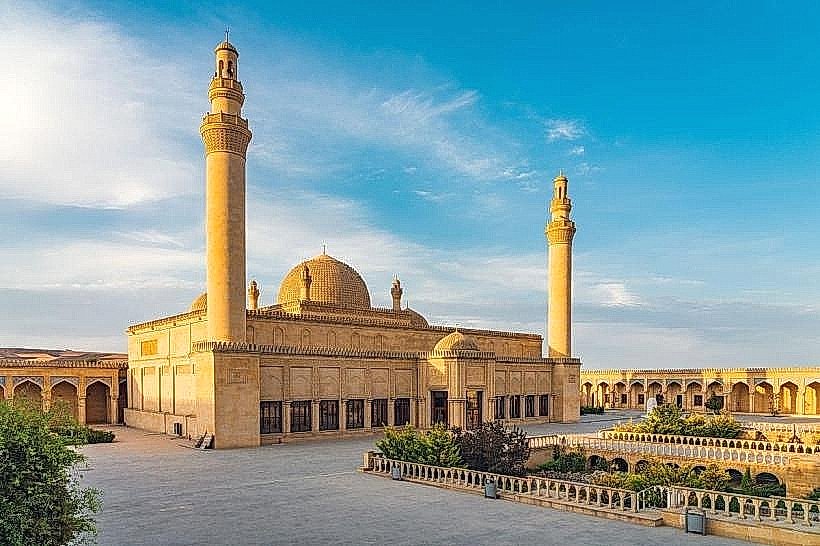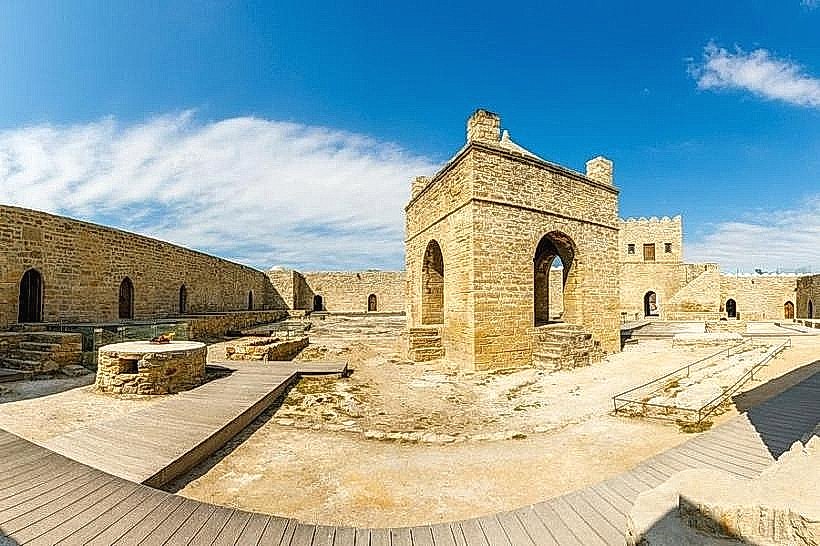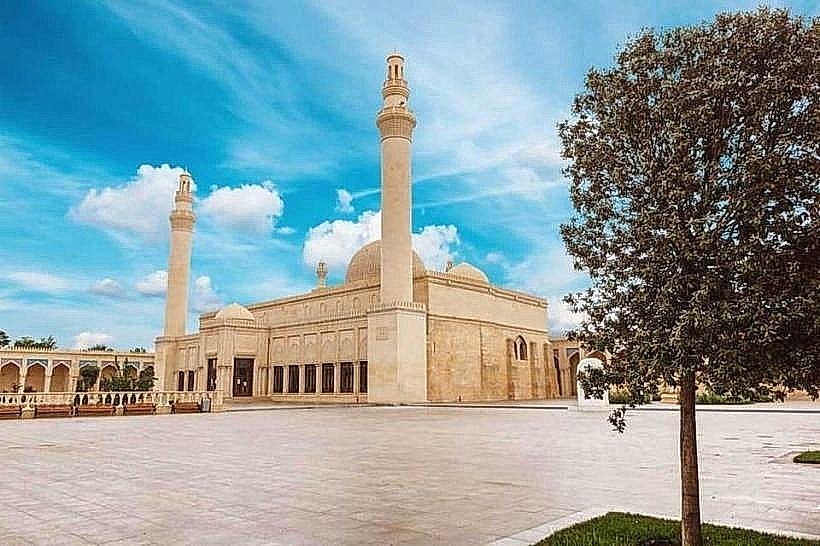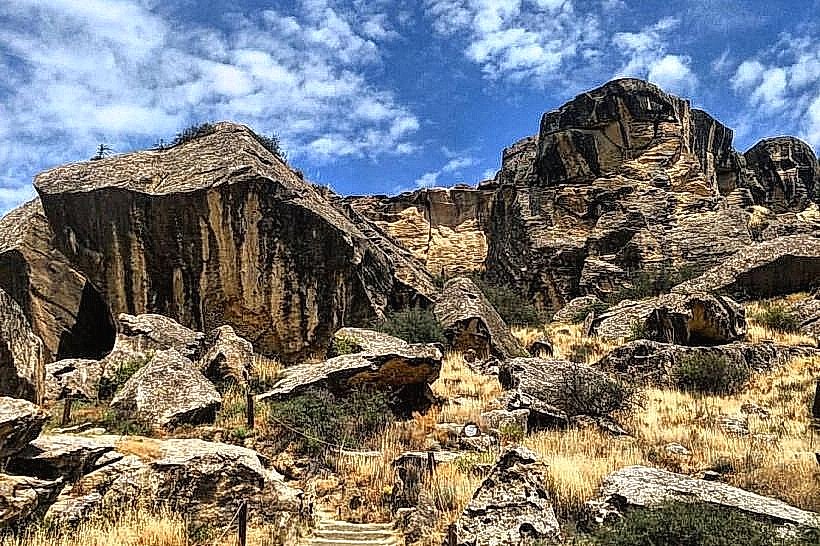Information
Landmark: Absheron CastlesCity: Baku
Country: Azerbaijan
Continent: Asia
Absheron Castles, Baku, Azerbaijan, Asia
Overview
Medieval castles dot the windswept plains of the Absheron Peninsula, their stone walls catching the salt-laced breeze and together creating one of the region’s most haunting historic scenes, along with rising between the 12th and 14th centuries, these fortresses guarded the trade roads, the quiet coastal villages, and the winding paths that led toward Baku.Honestly, Pale limestone walls lift from the dry earth like silent guards, their edges worn smooth by centuries of sun, salt wind, and the restless shifting of borders, meanwhile here’s a clear, full picture of what ties together the great castles of Mardakan, Ramana, Nardaran, and Amirajan-each stone tower holding its own story and distinct shape carved by time.During the Shirvanshah era, Absheron turned into a key frontier, where stone watchtowers rose against the wind, then the peninsula commanded the way into Baku’s harbor, its oil-soaked fields, and the caravan trails winding along the Caspian shore.In response, local rulers and village nobles built tight, stone fortresses that rose like watchtowers and doubled as shelters and minute command posts when danger crept close, not only that thick walls and sturdy defenses recall an era when the peninsula braced for sudden raids, rival khanates, and distant armies pushing inland through dust and wind.Architectural Character Each castle stands apart, yet they all speak the same Absheron design language-yellow limestone blocks, smoothly cut, their surfaces mellowing over time to a soft, golden warmth, alternatively tall towers-some round, others squared off-rise from the flat plateau, each offering a sweeping view of the dry grass and distant horizon.The narrow staircases twist tightly along the walls, the stone cool beneath your hand as you climb, along with narrow arrow slits watched over the village paths, ready for any movement beyond the stone walls.Modest courtyards, each with a cool stone cistern or a tucked-away storage nook, and the towers marry purpose with quiet grace-thick shadows spill down sharp edges, their timeless silhouettes etched against the wide, open sky.The Mardakan Round Tower, one of the key castles on the peninsula, stands tall above the village-a sturdy ring of stone catching the sea breeze, to boot its rounded shape helps it shrug off blows from siege engines, while the narrow balconies and cross-shaped slits reveal careful, deliberate military design.From the top platform, you can detect Absheron stretching out flat and pale under the sky, the horizon like a thin line of silver in the heat, moreover just a short meander away, the Mardakan Quadrangular Tower stands square and solid, its sharp corners catching the sun beside its rounded neighbor.Its thick stone walls, slit-like battlements, and maze of inner chambers make it feel like a sealed fortress built to outlast any siege, and ramana Castle rises from a craggy hill, its weathered stones catching the wind, making it one of the peninsula’s most haunting landmarks.The tower rises tall and rectangular, a quiet beacon over the cluster of white-stone houses gleaming in the sun, meanwhile the climb feels cramped and sharply tilted, yet from the top you can view rooftops glinting in the sun and the wide steppe stretching out with a quiet, lasting charm.Nardaran Castle is smaller but remarkably well preserved, its thick stone walls rising above a steep, echoing path that leads to the gate, besides the nearby village stays quieter than Mardakan or Ramana, lending the castle a sense of solitude-especially at dawn, when the pale stone warms in the first light.As you can see, Amirajan Castle, quieter than most, stands half-swallowed by the modern town’s stone walls and faded paint, equally important though it’s smaller, you can still witness its strong defenses-the thick walls and a tower that stands firm against the wind.You can still make out the shape of the timeworn medieval building in its thick, stone blocks worn smooth by centuries of rain, after that atmosphere and surroundings: the castles rise from the same Absheron plain-open, sun-washed fields where the wind drifts in with a dry trace of Caspian salt.Many sit near timeworn village lanes where flat-roofed houses press close together and tiny orchards scent the air, as a result as the sun drops, the walls fade from soft yellow to rich gold, and each fortress seems to breathe in stillness, its stones warm like the last light on a hillside.Visitors often say the castles feel surprisingly calm, the kind of quiet where you can hear the wind brush across classical stone, as well as no crowds gather here; only footsteps ring through the deserted courtyards, and the wind slips past the arrow slits with a thin, whistling breath, slightly often I think, The Absheron castles stand as a vivid reminder of the Shirvanshah state’s medieval defense network, their stone walls still carrying the chill of centuries past, furthermore the peninsula’s limestone fortresses stand as a distinctive tradition of architecture, their pale walls catching the midday sun.Somehow, A seldom-seen thread ties antique farm traditions to the salty bustle of coastal trade, on top of that they also show how petite communities leaned on these stone fortresses when trouble came.Exploring the castles is simple enough, though you’ll need to meander a bit and climb-inside, the stone stairs twist tightly and feel rough underfoot, equally important from a rooftop, you can observe far across the nearby villages-slate roofs glinting in the sun and winding lanes stretching toward the hills.You’ll glimpse the stone’s textures and shadows best in the soft light of early morning or when the sun dips low in the afternoon, subsequently most travelers squeeze two or three castles into a single trip, often pairing them with the Ateshgah Fire Temple, the burning hillside of Yanardag, and the wind-swept villages along Absheron’s coast.Absheron’s castles stand close and silent, a line of ancient fortresses carved from the same pale stone and molded by the same sun and ancient sense of defense, after that thick stone walls, tight passageways, and sweeping views turn them into some of the peninsula’s most haunting historic spots, giving visitors a clear sense of a region where timeworn fortresses and everyday life still meet.
Author: Tourist Landmarks
Date: 2025-11-23

























